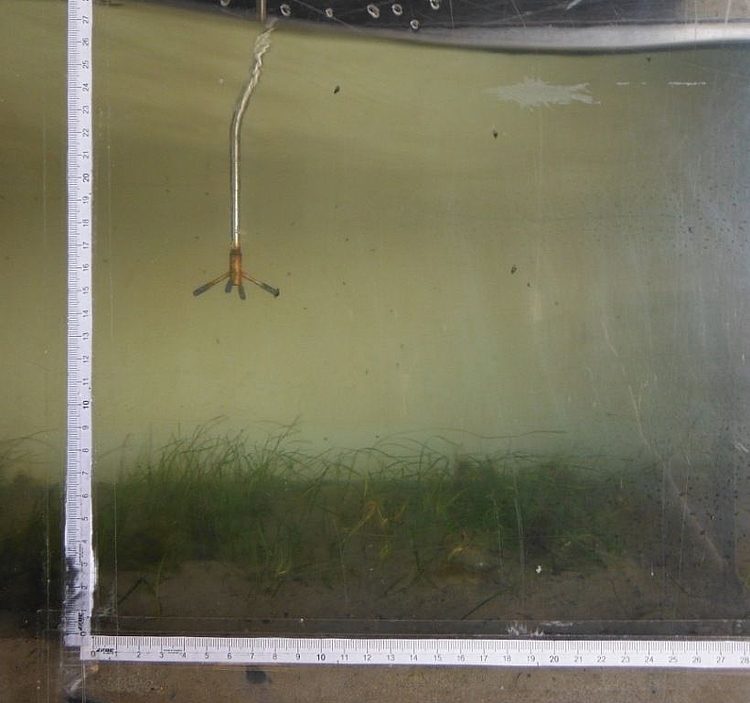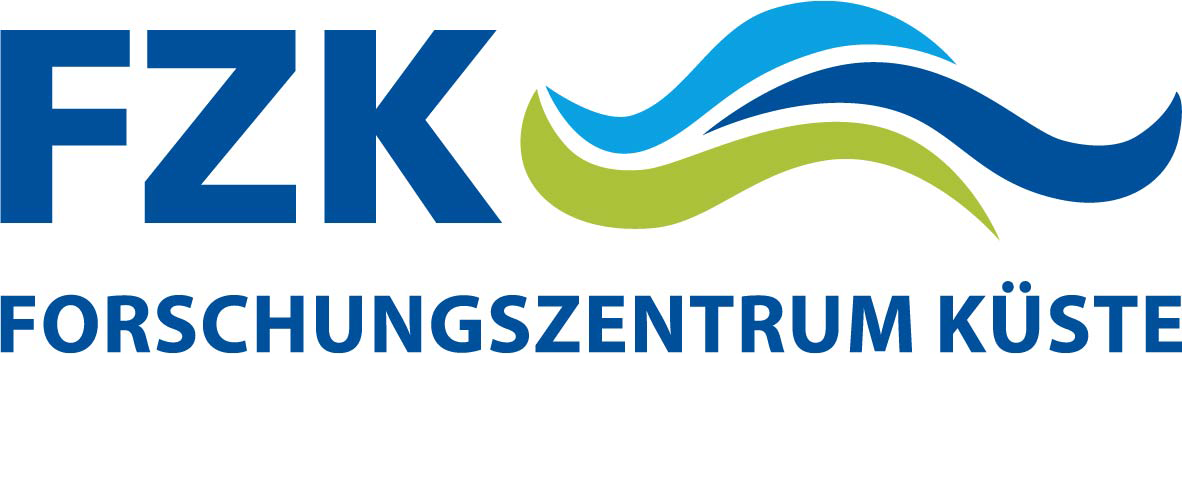Utilisation of waves and flow for nutrient uptake by seagrass plants
 © Forschungszentrum Küste
© Forschungszentrum Küste
| Leitung: | Dr. Maike Paul |
| Jahr: | 2013 |
| Laufzeit: | Juni 2013 - Juli 2013 |
Temperate seagrass beds can be found along intertidal and tidal areas of variable hydrodynamic forcing which can include wave action, flow and turbulence. The canopy structure can significantly alter hydrodynamic forcing via refraction from the leaves and absorption of energy through drag and motion. Density, patchiness, shoot stiffness and length of leaves are all characteristics of the physical structure of the seagrass bed and can therefore affect canopy structure. In return, hydrodynamics in seagrass beds are thought to affect the nutrient availability and the nutrient uptake rates of seagrass plants.In this study we expand existing research by investigating, how patch density alters (1) the uptake rate under various hydrodynamic conditions and (2) the hydrodynamic conditions themselves. To achieve this, a range of velocities in presence and absence of waves was applied to natural seagrass meadows in a laboratory flume. Waves were included in this set of experiments to reproduce more natural conditions and because they may open up the canopy therefore allowing for leaves to be exposed to dissolved nutrients. Natural meadows of the dwarf eelgras Zostera noltii were placed in a flume and exposed to a range of flow velocities (5-30 cm/s) with and without superimposed regular waves. Velocity profiles were measured at four locations along the meadow to monitor the progress of waves and flow evolution along the meadow. During some of the tests, the water was spiked with ammonium chloride (NH4+ CL) and water and plant samples were collected after the tests to obtain information about nutrient uptake by the plants.
The described experiments involve three different seagrass meadows (high and low density and no vegetation as control) and all of them will be exposed to nine hydrodynamic conditions. Additionally, five replicate runs of the nutrient uptake experiments will be carried out.








